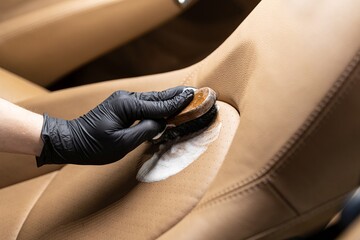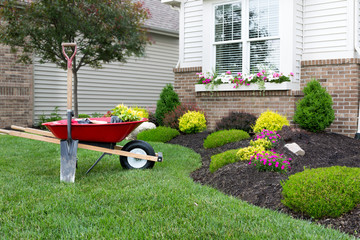A clean car is not only more attractive, but it also protects your investment and maintains its value. While a regular automated wash or drive thru car wash is great, detailing takes cleaning to the next level.
Detailing is a meticulous process that can take several hours, but there’s something very satisfying about watching every speck of dirt disappear and your car turn out better than when it left the showroom. Contact Car Detailing Gastonia NC for professional help.
The exterior of a vehicle is exposed to a variety of environmental elements that cause degradation over time. These include dirt, dust, road grime, tar, bird droppings, tree sap, harmful UV rays and more. Often, these contaminants dull and scratch paint surfaces and other exterior parts. Detailing includes a thorough cleaning and restoration of the vehicle’s exterior surfaces using high-quality products and specialized techniques. It is an essential part of maintaining a well-maintained vehicle and protects the investment by adding a layer of protection to all exterior surfaces.
The detailing process begins with a pre-wash using pH-neutral shampoo that is specifically designed to gently lift surface contaminants without harming the paint. Then, the car is rinsed thoroughly with a garden hose with an adjustable nozzle. Once the vehicle is dry, the detailer will inspect the paint for any areas that require more attention. The next step is to apply a quality wax that will seal and protect the finish against dirt and environmental damage.
A good auto detailer will use high-quality microfiber towels and rags to wash the vehicle, paying special attention to any problem areas identified during the contact wash. After the wash, the detailer will use a clay bar or clay mitt and lubricant to remove any baked-in contaminants panel by panel. Then, they will polish and wax the car to restore a showroom shine and provide the ultimate protection against environmental damage.
Interior
The interior of a car is cleaned, restored, and protected during the detailing process. This includes the upholstery, carpeting, dashboard, door panels, and anything else inside the vehicle. This process is very different than a simple car wash. Detailing uses high-grade products that protect the interior surfaces and make them look like they did when they left the showroom. This is a highly popular service that is not only for cars, but also trucks, buses, motorcycles, and even airplanes and helicopters.
The first step of an interior detail is to remove all the interior components and vacuum everything. After that, the surfaces can be washed with a degreaser. A special cleaner is used for any leather or vinyl surfaces. It is important not to oversaturate these materials because this can cause fading and cracking over time. After the cleaning process, a conditioner is applied to protect these surfaces.
A detailer will also remove the rubber trim and clean it thoroughly. It is important to use a gentle cleaning product because it should not damage the rubber, but some rubber cleaners are very harsh and can leave a residue behind. This residue can cause discoloration and can lead to a spongy feeling when you touch the rubber trim.
In addition to restoring the appearance of the interior, a detailer will eliminate odors and protect the windshield. This will make the car a more pleasant place to be for the driver and passengers. A clean car also looks better and is more attractive, which can help it get a higher price if it is ever sold in the future.
Taking care of your vehicle is very important for its longevity and safety. The best way to care for your car is by detailing it on a regular basis. Detailing helps to protect the paint and interior from damage and aging, which can save you a lot of money in the long run.
Whether you are a beginner or a professional, Blask has the products to help you keep your car looking dealership new. Our line of premium products is designed to give you the results you are looking for without the hassle of DIY car detailing.
Glass
A well detailed windshield and windows are just as important to the appearance of a vehicle as a freshly waxed paint job or shined tires. Having clean windows on your car not only looks great but it helps you see clearly when driving.
Getting your glass looking its best requires some different techniques than cleaning the rest of the body of the vehicle. Detailing professionals typically prefer microfiber towels to help avoid any scratches on the glass. These towels are also washed regularly and used exclusively for glass cleaning so that they don’t become contaminated with dirt from other areas of the vehicle. A waffle weave microfiber towel offers a slightly more abrasive surface to better tackle bug splats or water spots on your glass.
Glass can be treated with a hydrophobic coating to help water droplets “bead up” and roll off your windshield in wet weather, making it easier to keep clean. This service is often included in a full detail package or can be provided as a specialized add-on. Properly detailing your glass is critical to the safety of you and other drivers on the road.
Paint
Car detailing is a comprehensive set of treatments that beautifies, renovates, and protects various components of vehicles so they can shine and remain in good condition for a long time. It’s a popular service for vehicle owners who are looking to get the most out of their cars, trucks, motorcycles, and even boats and airplanes. Authentic detailers offer multiple treatments that are meant to rejuvenate the appearance of a car, extend its lifespan, and maintain or increase its value.
Unlike the simple and quick cleaning of a car wash, detailing is painstakingly done with every nook, cranny, and crumb cleaned. During this process, the paintwork is carefully inspected and restored. The paint is then protected using various methods, including waxes, sealants, and spray on coatings.
This process takes a lot of patience and skill, but the results are a gleaming car that is protected against the elements for years to come. Some of the more advanced detailing services include color sanding or wet sanding to alleviate orange peel, as well as the application of PPF (paint protection film) or clear bra to protect the paint from chips and scratches.
Before any wax or spray on coating is applied, it’s essential that the car is thoroughly decontaminated with a high-quality, pH neutral, no-wax, low-suds, detergent based car shampoo. This is important to prevent the build-up of dirt, oils, and grime that can dull the finish and cause swirl marks and scratches.
It’s also essential that all paint imperfections are corrected before sealing the surface with a glaze product. If you’ve ever been to a shop that claims to perform full-detailing only to have your car come back looking scratched a few weeks later, it was most likely because they used a glaze product to cover up their poor paint correction skills.
To ensure the best result, it’s critical to use products that are compatible with your specific paint type and finish. Professional detailers know which cleaners, polishes, and applicators are best for each individual vehicle. They also understand the importance of proper drying techniques, as air drying can lead to water spots and streaks. They also make sure to use a microfiber towel for each step to prevent scratching the paint or damaging the clear coat. They may also recommend a ceramic coating or PPF to help protect your car against the elements.








